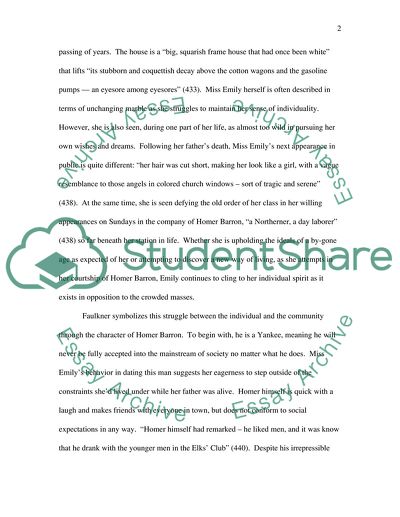Cite this document
(“William Faulkners Barn Burning and A Rose for Emily: The Individual Essay”, n.d.)
William Faulkners Barn Burning and A Rose for Emily: The Individual Essay. Retrieved from https://studentshare.org/literature/1549211-william-faulkners-barn-burning-and-a-rose-for-emily-the-individual-vs-the-community
William Faulkners Barn Burning and A Rose for Emily: The Individual Essay. Retrieved from https://studentshare.org/literature/1549211-william-faulkners-barn-burning-and-a-rose-for-emily-the-individual-vs-the-community
(William Faulkners Barn Burning and A Rose for Emily: The Individual Essay)
William Faulkners Barn Burning and A Rose for Emily: The Individual Essay. https://studentshare.org/literature/1549211-william-faulkners-barn-burning-and-a-rose-for-emily-the-individual-vs-the-community.
William Faulkners Barn Burning and A Rose for Emily: The Individual Essay. https://studentshare.org/literature/1549211-william-faulkners-barn-burning-and-a-rose-for-emily-the-individual-vs-the-community.
“William Faulkners Barn Burning and A Rose for Emily: The Individual Essay”, n.d. https://studentshare.org/literature/1549211-william-faulkners-barn-burning-and-a-rose-for-emily-the-individual-vs-the-community.


